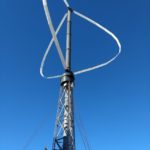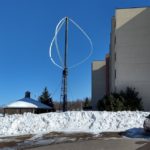Good ideas are those that might be useful in some situations or with some fine-tuning to make them work well or to fit a particular situation.
Essential ideas are those that would be useful in all situations because they address basic facts about nature. Essential ideas would be helpful with fine tuning to particular situations or not – they pertain to physics and physiology. Gravity works basically the same in all situations on earth but would be different on different planets. Physiology – the physics of the human body and other life forms also works basically the same throughout all humans and for many types of species. Some fine tuning for slight differences across species or for different groups of humans might be needed for best results but the underlying physics of physiology works roughly the same for much of life. Nature loves a good design and repeats it from single celled organisms through much of the plant and animal world.
I keep sharing information in the hope that it can be useful for creating a more sustainable society. Our current trajectory is heading towards extinction for the human race and many other species because we are polluting the environment in ways that reduce health and fertility for our own species and across the plant and animal world and for single-celled organisms. We are also polluting the air and water and soil in ways that are affecting weather and climate and ocean physics/physiology. Ocean water is somewhat alive in that it is the host for many microorganisms and is somewhat like blood plasma for the planet. Between the rain and ground water and ocean water there is a cycle that can clean toxins but only within a range of acidity and then the chemistry is tipped towards less oxygen and less support of the life-forms that we are similar to and accustomed to living with. Much of geological history during the early years of Earth the type of life that predominated was sulfur-loving bacteria – humans would not have been able to survive in that environment.
Ignoring physiology and physics is not a good idea. Sustainability and respect for nature is an essential idea.
Examples from a few recent posts – the solar windmill air cleaning ideas are examples of good ideas that might be implausible as I wrote them but with some fine-tuning by mechanical and chemical engineers might become plausible and helpful ideas. (Imagining solar windmills)
The information about phospholipids and fertility and nutrition are essential ideas that will always be important for humans and in the care of the environment for supporting many other species that we value – more than we value or could survive if sulfur loving bacteria become the predominate type of microorganisms living on the planet again. (Phospholipid and infant formula) (Phospholipid and fertility)
The chemical invented by humans initially as an antibiotic and mineral chelator that is now being used in large quantities as an agricultural herbicide (glyphosate) may also be inhibiting the function of CYP enzymes which are needed for many important functions in metabolism for humans and plants and animals and single celled organisms – 195000 search results: (CYP enzymes and phosphorylation) Farmers are now being recommended to rotate fields where the herbicide Roundup/glyphosate containing herbicides are in use because it has been found to build up in the soil and can affect crop yield due to inhibition/destruction of the actively growing root tips.
Phospholipids can be made in average healthy humans but the process does require phosphorylation – the question to ask yourself is: What percentage of infertility and birth defects will be too much? When will we stop polluting our environment and our food supply with chemicals that cause infertility, birth defects and other types of chronic illness and cancer? Agricultural workers and people living near agricultural fields are the ones most prone to cancer and some other rare diseases. Is that what we want from our food supply?
Coastal areas near agricultural areas (ocean dead zones map) and some regions of the Pacific Ocean (Pacific coastal dead zones) are now without oxygen – sulfur-loving bacteria can survive without oxygen. Far more information on sulfur-loving bacteria than the average person probably knew existed, is available online, in free full text, thanks for sharing: (Biochemistry and molecular biology of lithotrophic sulfur oxidation by taxonomically and ecologically diverse bacteria and archaea)
Some of the types of sulfur-loving microbes are how life exists in extreme climates such as thermal heat vents in deep ocean areas. A few have evolved as symbiotic species living within larger organisms and which provide energy in low oxygen or oxygen free areas of the ocean for species of mussels and tubeworms. Sulfate sources allows growth in environments that lack oxygen and light. Even they need to be able to metabolize phosphorus – it is used in enzymes to metabolize energy. Sulfur loving bacteria may need to make the enzymes: “adenosine 5′‐phosphosulfate (APS) reductase” and “ATP sulfurylase” Other types of bacteria can grow in environments that lack oxygen but have light. Extremely acidic briny marshes and highly saline salty marshes also can support life for some of the group of anoxygenic (don’t need oxygen) photolithotrophic (can make energy from light) bacteria:
“However, diverse groups of optimally adapted anoxygenic photolithotrophic bacteria thrive in moderately extreme temperature, pH or salinity conditions, and act as primary producers in such unusual habitats (Madigan, 2003).” – (Biochemistry and molecular biology of lithotrophic sulfur oxidation by taxonomically and ecologically diverse bacteria and archaea)
Even arsenic-loving bacteria able to grow in extreme environments need phosphorus. Six nutrients are essential to all life forms, hydrogen, carbon, nitrogen, oxygen, phosphorus and sulphur. there was some controversy over a new type of bacteria that was discovered because it can substitute arsenic for phosphorus in some of its chemical composition but further study showed that it also needs some phosphorus. (Arsenic-loving bacteria needs phosphorus after all)
Why care about phosphorus? Because we all need it and the Earth’s supply of bioactive phosphorus is in limited supply. Estimates suggest that at the rate it is currently being used in agriculture (wastefully, without being recycled back into the growing cycle) that we have about forty years supply left for the planet. That is two generations of people – what are we going to tell our great grandchildren? Sorry kids we enjoyed life but you have to figure out something else – or enjoy extinction.
More traditional farming methods used recycled fertilizers such as composted manure or compost made from other vegetative material such as last year’s leaves and lawn clippings. The current chemical fertilizer is more wasteful in that it gets washed off into ground water and eventually ends up in coastal waters where algae overfeed on the excess nutrients, using up available oxygen in the process and then dying off leaving dead zones with no oxygen and no more excess phosphorus in the coastal region. So returning to more traditional agricultural methods that conserve phosphorus and cause less runoff into coastal regions leading to less dead zones in those areas of the ocean seems like an essential idea for our great great grandchildren and like a good idea for us to tackle right now, this generation.
Recognizing that phosphorylation is an essential part of health and fertility and that some people, such as infants, need an external source in their diet seems like an essential idea for this generation if we hope to have a healthy generation of grandchildren or great great grandchildren.
Disclosure: This information is being provided for educational purposes within the guidelines of Fair Use. While I am a Registered Dietitian this information is not intended to provide individual health care guidance. Please seek an individual health care provider for individualized health care guidance.






